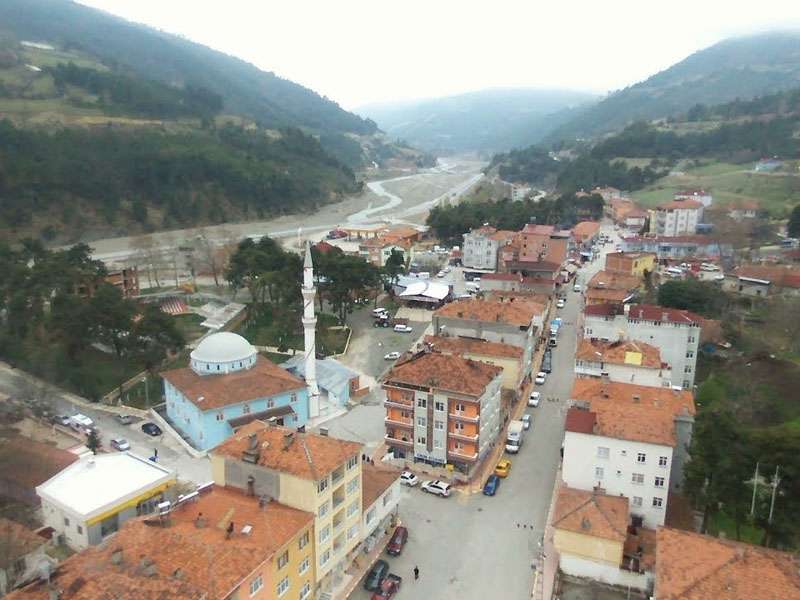Dikmen is the district with the smallest population in Sinop. Agriculture and animal husbandry form the basis of the district's economy. There are 28 villages and 3 neighborhoods connected to the district. Historical mosques in the villages of Kerim, Göllü, and Görümcek reflect the district's cultural heritage.
History
Dikmen, located 50–55 km from Sinop city center, on the border of Samsun province, was a sub-district center connected to Gerze, and gained district status with law number 3644 on May 20, 1990. It effectively started serving with the appointment of its first district governor on July 23, 1991. Today, there are 28 villages connected to the district.
Although there is no direct source from the written ancient period, according to the local oral history, the "Yeni Cuma" (New Friday) center around the mosque built in 1789 played a decisive role in the institutionalization of the settlement, and people from 30 surrounding villages began to come to this center to meet their weekly needs. In the early years of the Republic, status changes occurred; the central headmanship was abolished in 1953, and the district identity was preserved with the re-inclusion of ten villages in 1968.
Geography and Climate
Dikmen is a district located in the Güzelceçay (Kanlıçay) Valley of the Western Black Sea basin, amidst dense pine forests, with a mountainous and rugged terrain; it is included in the first-degree landslide zone. The total area of the district is 450 km², the distance of the central settlement from the sea is 12 km, and its average elevation from the sea is 210 m.
The climate exhibits a temperate regime under the influence of the Black Sea; the annual average temperature is 14 °C, and the relative humidity hovers around 70%. The vegetation is characterized by chestnut, pine, and oak forests in areas near the coast; and by fir, hornbeam, and beech communities at higher altitudes.
Population and Demography
While the total population of Dikmen district was 7,037 people as of 2007, it decreased to 4,851 people in 2024, with increases of 321, 480, and 445 people respectively in the periods of 2009–2010, 2017–2018, and 2022–2023; and decreases in varying rates in other years. According to 2024 data, the male population is 2,556 (52.69%), and the female population is 2,295 (47.31%), with the difference between genders generally remaining within a few hundred people. Annual population changes have followed a fluctuating course that can be explained by various factors such as local record updates and migration movements.
Economy
The district economy has a multi-sectoral structure, with services, agriculture-livestock, and industry sectors prominently featured in that order. The services sector constitutes 86.3% of the local economic activity; this is the lowest share in Sinop province overall. The agriculture and livestock sector ranks second with a rate of 7.3%; as most of the lands are VI. and VII. class agricultural land, cereal cultivation remains limited, with wheat, barley, oat, and corn being grown; fruit, vegetable, and beekeeping also hold economic value. Forestry is an important source of income for the local population due to the extensive forest cover.
The industry sector constitutes 6.4% of the district's economy. Four fishmeal and oil factories established in the Güzelceçay locality with state support meet 35% of the fishmeal and oil produced nationwide in Türkiye; products are exported to domestic and Japanese markets. A chicken farm and a feed factory also operate in the district.
Tourism–Culture–Cuisine
Within the scope of winter tourism, Göktepe and Soyuk Tepesi, located on the border of Gerze, offer facilities suitable for skiing. For summer and plateau tourism, the villages of Kuzfındık, Omurlu, and Üçpınar, along with the Domuzalan and Ayvalan Plateaus extending to Yakakent district of Samsun, are important centers.
The Traditional Winter Festival, held annually in Yaykın Village in Dikmen, has become a cultural gathering point where local villagers come together; in addition to activities such as folk plays and rally races with wooden vehicles, social solidarity is strengthened around the "tirit" table. In the field of handicrafts, traditional wool rug weaving and the production of sashes with hand-embroidered motifs are continued by female artisans.
The local cuisine includes practical recipes specific to Sinop and Dikmen; particularly "tirit", which stands out at the winter festival, is served by combining layered bread pieces with meat broth or a yogurt sauce. This traditional dish, shared during the festival, is a symbol of both the local table culture and social unity.



